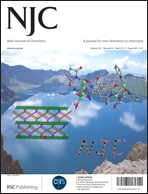Probing the effect of substituted groups on sensory properties based on single-crystalline micro/nanostructures of perylenediimide dyes†
Abstract
Two core-tetrachlorinated perylenediimide derivatives PTCDI-ClC12 and PTCDI-ClC4F7 bearing electron-donor


 Please wait while we load your content...
Please wait while we load your content...